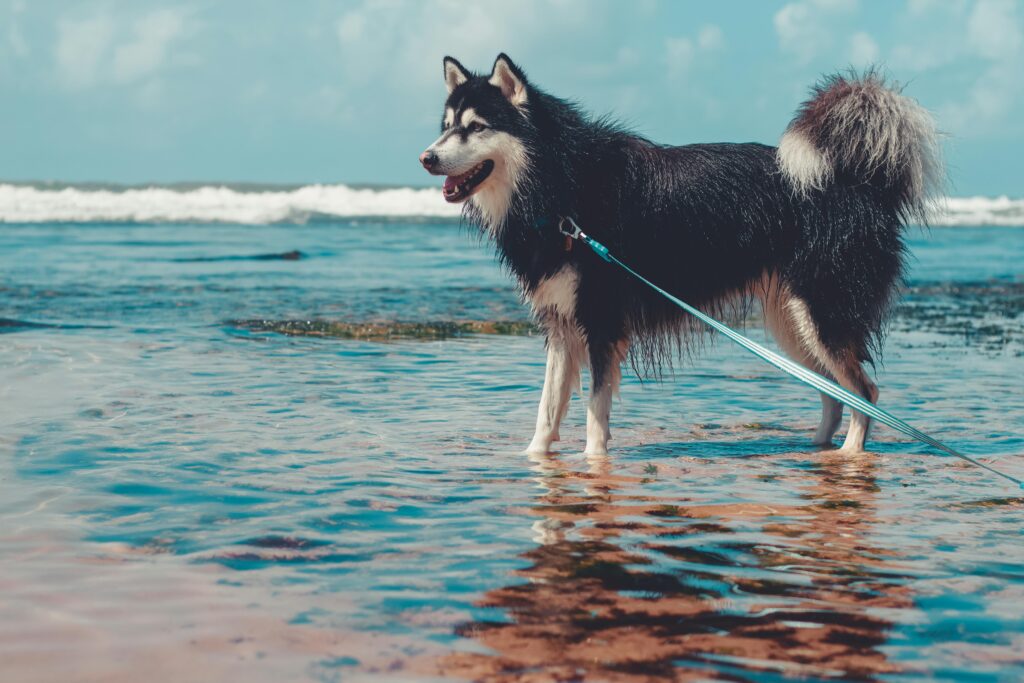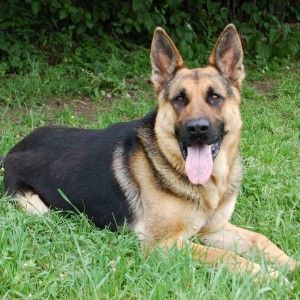Sakhalin Husky is a rare dog breed originating from Sakhalin Island in Russia. These sled dogs are used for pulling sleds and hunting bears in Arctic weather.
- Statistics
- Sakhalin Husky Dog Breed
- Size
- Adaptability
- Sakhalin Husky Personality
- Quick Facts
- Temperament of Sakhalin Husky
- Sakhalin Husky vs Siberian Husky
- Sakhalin Husky History
- Sakhalin Husky Dog Breed Characteristics
- Health Problems
- Caring for a Sakhalin Husky
- Training & Exercise Needs of Sakhalin Husky
- Diet & Nutrition
Statistics
| Dog Breed Group | Domestic Dog/Working Dog |
| Height | 22-26 inches |
| Weight | 66-88 pounds |
| Lifespan | 10-12 years |
Sakhalin Husky Dog Breed
Because of their origin in Sakhalin, Russia, the Sakhalin huskies are known as the Karafuto-Ken (Japanese Karafuto means Sakhalin and Ken means dog) or Ainu-ken primarily used as a sled dog. Their double coat is suitable for the harsh cold of Sakhalin because it keeps them insulated. The calm, devoted, and intelligent Sakhalin huskies are used for pulling sleds, hunting bears, and fishing in Arctic weather.
These ancient and rare companion dogs are good choices for experienced owners who know their needs and keep them accordingly. Dog breeders have focused on preserving the Sakhalin husky breed due to its excellent characteristics. Approximately 20 Sakhalin huskies are left on Sakhalin Island.
Size
This breed ranges from medium to large up to 22-26 inches and weighs 66-88 pounds. They have deep chests, strong legs, wedge-shaped heads, and long thick double coats that protect them in the cold.
Adaptability
These dogs adapt well to various environments due to their thick double coat, high energy levels, and strong build, making them particularly suited for cold climates. Their friendly and adaptable nature makes them excellent companion dogs for individuals and families. However, proper care, exercise, mental stimulation, and a balanced diet are essential for their overall well-being.
Sakhalin Husky Personality
This breed has an elongated body with a double coat that provides insulation against the Sakhalin climate. They stand between 22 and 26 inches tall and weigh between 66 and 88 pounds. They have straight or slightly bent tails. The Sakhalin husky has Black, Gray, Brown, White, Russet, Cream, and Biscuit colors but people use black Sakhalins because it is easily visible in snow.
This breed has almond-shaped eyes with various colors including pale blue, brown, green, and yellow sometimes they have two different eye colors which gives them a gorgeous look. This happened due to a special type of gene that is responsible for two different eye colors. These dogs possess strong muscles and triangular faces with prick ears. Due to their well-developed skeleton, the Sakhalin Dogs can easily drag up to 70 kg weight in snowy areas.
Quick Facts
Origin: Sakhalin Island in Russia
Coat: Thick double coat comes in various colors
Temperament: calm, intelligent, loyal, independent
Training: Somewhat easy to train but can be difficult so be patient
Health: Sakhalin Huskies are generally healthy but prone to hip dysplasia, elbow dysplasia
Lifespan: 10-12 years
Size: height 22-26 inches and weight 66-88 pounds
Exercise needs: just like their appearance, they need high-level exercise to remain mentally stimulated
Temperament of Sakhalin Husky
The Sakhalin husky dogs are gentle, intelligent, and loyal to their owners. They are not aggressive to other people and dogs because of their friendly nature. These dogs have a strong prey drive and can hunt bears and fish on their behalf without any instruction. Therefore, they need excessive exercise to keep them stimulated. All Husky types are intelligent, smart, and love to work independently. Moreover, they love to remain outside most of the day but the main thing is that they feel separation anxiety if left alone for a long time and become destructive.
Sakhalin Husky vs Siberian Husky
| Characteristics | Sakhalin Husky | Siberian Husky |
| Origin | Sakhalin, Russia | Siberia, Russia |
| Size | Medium to large with a heavy body | Medium-sized with strong build-up |
| Coat | Thick, dense double coats | Also, thick coats but fluffy and flowing |
| Temperament | aloof and independent | Friendly and people-oriented |
| Trainability | Stubborn and independent therefore difficult to train | Positive reinforcement is essential during training |
| Vocalization | Less vocal than Siberian Huskies | Known for their vocalization called “Husky howl” |
| Popularity | Rare Breed | One of the most popular dog breeds |
Sakhalin Husky History
The Ainu people found Sakhalin huskies to be the most hardworking and resilient companions in the Arctic harsh conditions where they used them for difficult transportation. Originating from the Sakhalin region of Russia where the climate is so cold and harsh that people face problems with transportation. Thus, Sakhalin huskies played a significant role in history as sled dogs.
In 1808 and 1809 a Japanese explorer Mamiya Rinzo one of the most popular explorers from the late Edo period wrote in his report to the Edo shogunate: “Inhabitants [of the northern regions of Sakhalin] often use dogs. Every family, rich and poor, has dogs. They played with them and took care of them. Often one person keeps 3–5 dogs, and even a whole family has many of them.” Rinzō also presented drawings showing people resembling modern Nivkhs traversing the snowy plains in dog sleds. (Wikipedia).
Sakhalin Huskies are an endangered breed that could become extinct if not properly cared for and bred. Fortunately, they share common ancestry with other Arctic huskies and spitz breeds. Alaskan Malamutes, Siberian Huskies, Samoyeds, and Canadian Eskimo dogs are all closely related to Sakhalin Huskies.
As time passed, these dogs faced many difficulties because of the changing lifestyles of the Ainu people and the introduction of other dog breeds. Russia and Japan protected their historical culture and genetics.
Historical Role of Sakhalin Husky
In the northern regions of Russia, sled dogs are highly valued and popular because they are utilized not only by local inhabitants but also for various tasks such as postal services, military packs, and scientific expeditions. The Sakhalin Dogs gained popularity after a Japanese expedition to Antarctica in 1958 when researchers let the 15 Sakhalin Huskies outside and thought that they came quickly after retrieving the dogs. Unfortunately, these dogs didn’t return due to bad weather. When new explorers arrived at the research station after one year, they found two dogs Jiro and Taro survived out of 15 dogs. In 2011 two purebred dogs Hana and Kuma were reported to live in Japan.
Sakhalin Husky Dog Breed Characteristics

Origin: originating from Sakhalin Island with a rich historical background of Ainu People who used these dogs for various tasks
Adaptability: They are adaptable to all environments due to their friendly and versatile nature. They use their bushy tail by raping around their face during sleeping.
Training: Early training and socialization are essential for well-behaved dogs. All huskies are good learners and therefore learn quickly how to escape. For this reason, training is difficult, and just like other huskies, Sakhalin husky dogs are also not a good choice for first-time dog owners.
Exercise needs: They need daily exercise, usually for many hours. Jumping fences, running in yards, and taking long walks can keep them fit.
Health: All huskies are generally healthy but prone to some illnesses like hip dysplasia, elbow dysplasia, and eye problems.
Appearance: Sakhalin huskies are somewhat taller than other husky breeds and share many of their characteristics. They have a functional double coat, which is similar to that of other huskies. The inner coat is short and warm, excellent for Arctic cold and harsh climates, while the outer coat is water-repellent. Their appearance resembles that of wolves, as they are descended from the Taimyr wolf found in Russia.
Size: Sakhalin Husky dogs are medium to large slightly taller up to 22-26 inches.
Prey Drive: They have a strong prey drive and run after small animals
Health Problems
Sakhalin Huskies, renowned for their striking appearance and remarkable endurance, require attentive care to maintain their well-being. While they are generally robust dogs, they are susceptible to several health issues that owners should be aware of.
Seizures and Epilepsy: Epilepsy, a neurological disorder characterized by recurrent seizures, can occur in all Huskies. While the exact cause is often unknown, genetics may play a significant role. Seizures can vary in severity and frequency, and management typically involves antiepileptic medications prescribed by a veterinarian. Monitoring for triggers and maintaining a stable environment can also help reduce the frequency of seizures.
Back Spine and Neck Issues: Huskies are prone to back spine and neck problems, particularly intervertebral disc disease (IVDD). This condition involves the degeneration or herniation of spinal discs, leading to pain, weakness, and sometimes paralysis. Activities that put a strain on the spine, such as jumping or rough play, should be minimized.
Tumors and Growths: Like Siberian Huskies Sakhalin Huskies are also, susceptible to various tumors and growths, both benign and malignant. Regular grooming sessions provide an opportunity to inspect the skin for any unusual lumps, bumps, or changes in texture or color. Early detection of tumors allows for prompt veterinary evaluation and treatment, which may include surgical removal, chemotherapy, or other interventions depending on the nature and extent of the growth.
Caring for a Sakhalin Husky
The dogs of husky families have double-layered coats Which shed most and need regular and proper grooming, especially during spring and fall to prevent skin issues and other problems. For this purpose, use a slicker brush to remove loose hair and prevent tangle and itching. After brushing bathe your dog with shampoo especially manufactured for dogs. Nail trimming, toes, and eye cleaning are also necessary for their health.
Training & Exercise Needs of Sakhalin Husky
Nowadays many people think that Sakhalin Huskies are extinct but this is not true this breed is endangered means that these dogs are few and can be extinct if not cared for properly. All sled dogs are well-athletic and strong they need early training and socialization. Similarly, Huskies are also good runners and they are packed dogs who think they are the leader of the pack. If you want to train your husky like Sakhalin you must show yourself a leader before him in this way, they can learn that you are a leader and he is a member of the pack. Thus, these dogs can be obedient to you.
Sakhalin Husky loved to go outside and pull carts and sleds therefore, during the Second World War Russia used the Sakhalin Husky to pull the supplies from station to station. Today they are also used as working dogs. These dogs require exercise for several hours a day to maintain their mental and physical health.
Diet & Nutrition
In addition to training, care, and exercise, proper consideration is also required in terms of a balanced diet. As a sled dog, Sakhalin Husky needs food that fulfills their dietary requirements. In the harsh conditions of Arctic land, Sakhalin dogs need a diet rich in protein and fats. Fats can maintain their body temperature.
The Huskies are omnivores and therefore can eat both meat and veggies (not corn or grains). Always select dog food that is rich in fats and proteins such as seal, salmon, and bear. Due to their massive body, they eat too much to compensate for their appetite. Set a regular feeding schedule to prevent obesity which can cause hip dysplasia and also consult with a nutritionist or a vet before setting a schedule.
The Soviet military used Sakhalins as sleds or working dogs in the Second World War. They feed a large number of salmon and find it difficult to feed Sakhalins as compared to horses. Thus, they wanted to export salmons instead of feeding them to Sakhalin Huskies. Tragically, they started to decrease the number of Sakhalin dogs.



